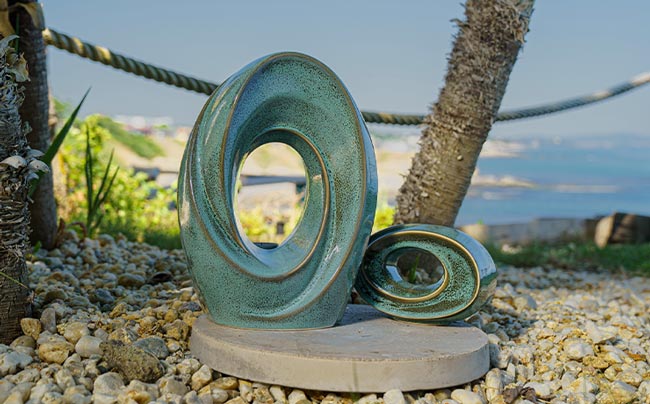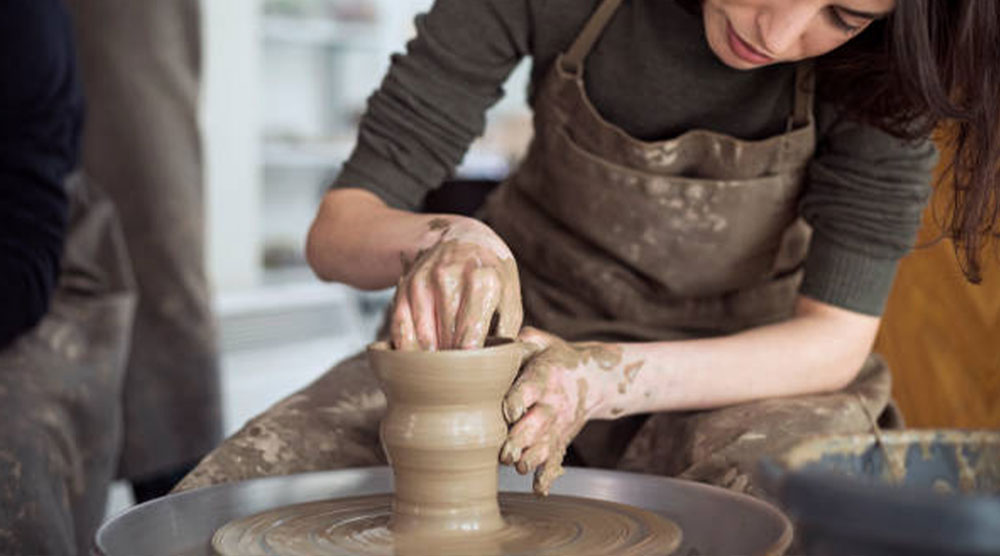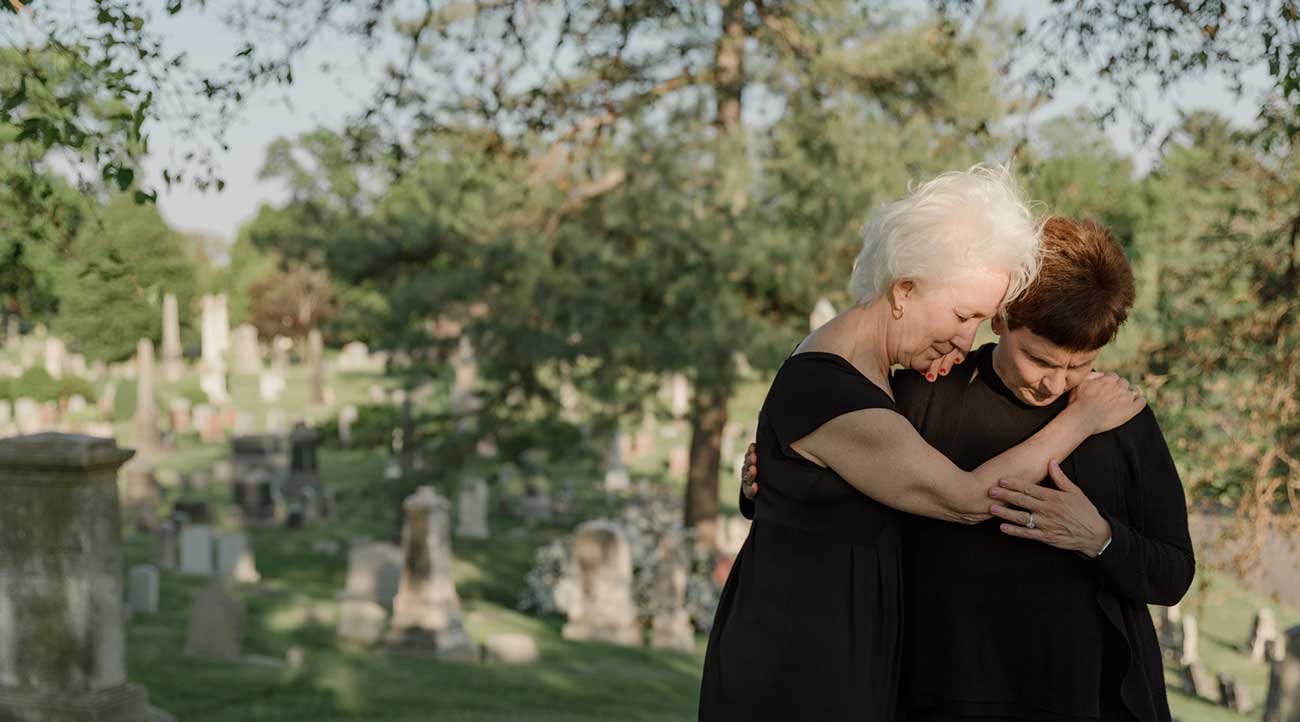
What is an urn? - The History and Significance of an urn
Cremation urns for ashes can be dated back many thousands of years. Many factors such as religion, health requirements, and social views have influenced the popularity and practice of cremation. Today, there are 31 countries around the world where cremation takes place, with millions of cremations taking place a year.
What does urn mean?
Urn is from the Latin word urna for "a jar or vessel," but some say it's from another Latin word urere which means, "to burn.” While some urns are used for making hot drinks, the most common use of an urn is holding the ashes of a dead person. Most urns are decorated.
What is an urn?
So, what are urns? Cremation urns for ashes are containers that are meant to hold the cremated remains (cremains) of a deceased person. Cremation urns come in many different forms and sizes and are made out of various materials.
What are urns used for?
An ashes urn is a receptacle for keeping the cremated remains of a person who has passed away. They can be permanent containers for cremated ashes if, for example, you want to keep the urn with your loved one's remains in your family home, a columbarium, or crypt.
Why do people store ash in urns?
Storing ashes at home is a great way to honour a loved one amongst your family. Keeping ashes, no matter the vessel, in a public place also makes it easy for future generations to pay their respects.
How old is the practice of cremation?
The earliest evidence of the use of urns for ashes was located in Jiahu, China, where 32 cremation urns were discovered. The vastly different sizes of the urns for ashes suggests that these were cremation urns for adults and urns for children. These pottery urns that were unearthed on the site are dated back to 7000 B.C. The first known method of cremation is thought to have been in 8000 B.C.
Scholars generally believe that the act of reducing a body to ash began during the early Stone Age, around 3000 B.C., most likely in Europe and the Near East. Archaeological finds of particularly decorative pottery from the Stone Age have been found in western Russia among the Slavic people. These pots are thought to have been cremation urns for human ashes.
Archaeological evidence shows that the cremation practice spread during the Bronze Age, 2500-1000 B.C., reaching the British Isles (now Spain and Portugal). In Hungary, Italy, extending to northern Europe and Ireland, cemeteries began cropping up which were specifically allotted for cremains.
In approximately 1000 B.C., during the Mycenaean Age, cremation became a common feature within ancient Greece burials. Homer’s Iliad describing the final year of the Trojan War suggests that cremation was a blessing to ensure the health of civilians following the death of slain warriors, which would otherwise have been unavoidably buried.
During the period of the Roman empire (600 B.C. - 600 A.D.), cremations were commonly used for honoured members of society. The ashes were placed in simple urns which were kept in buildings resembling the modern-day columbarium. The practice of cremation became less popular with the rise of early Christianity during the later Roman era. Burials became less popular as Christians discouraged the practice of cremation as it was considered against their faith and considered to be pagan.
Eventually, the reign of Constantine over the Roman Empire during 400 A.D. brought the domination of Christianity and the offset of traditional burials over cremation.
Through the Middle Ages, generally the 5th century to the late 15th century, between the fall of the Roman Empire and the beginning of the Renaissance, cremation morphed into a form of punishment and it was not viewed as a compassionate way to care for the deceased.
Ultimately, cremation urns are dated back to 7000 B.C., but pottery itself is dated back to at least 25,000 B.C. Could this pottery have been used as cremation urns for ashes?
When did cremation become popular?
In England after 1800, populations and architecture started to boom within growing cities, putting pressure on unused spatial areas such as Anglican churchyards. By the 1850's, the shortage of burial spaces initiated Parliament to establish that that cemeteries would become the successors of churchyards. These developments affected the Church's approach to dealing with death. The interference of the state promoted non-Anglican funeral services and legislation for cremation services.
The practice of cremations and the use of urns regained popularity in Europe in the late 19th century. An Italian painter named Brunetti developed a design of cremation urns at the 1873 Vienna World Fair. In England, Sir Henry Thompson (Queen Victoria's physician) began to promote cremation.
The surgeon founded the Cremation Society of England in 1874. This gave rise to the formation of crematories in the town of Woking, England and Gotha, Germany.
Cremation and the use of urns gained popularity in North America during the same years. The first crematory was built in Washington, Pennsylvania by Dr Julius LeMoyne. In 1884 another crematory was established in Lancaster, Pennsylvania which was owned and operated by the Cremation Society.
The influences behind these crematories included the protestant clergy who wanted to reform the burial practices in North America. Other influences included medical professionals who were concerned regarding the health conditions around the early cemeteries.
By 1900, there were already 20 crematories in the US. In 1913, Dr Hugo Erichsen organised the growing number of crematories under the Cremation Association of America. There were around 52 crematories in North America as more crematories were established across the United States. As these crematories were built the demand for cremation urns increased.
Those who were early supporters of cremation and formed societies and associations were funded by members and patrons, allowing the formation of crematory buildings in their community. This effectively allowed them to pre-pay for their own cremations when the time came.
Furthermore, as time has gone on, religious views towards cremation methods have relaxed with the attitudes towards them being eased. In the 1960's the ban on cremation was lifted within the Catholic Church. In 1983, the Code of Canon Law states the Church does not forbid cremation.
In 1975, the name of the society changed to the Cremation Association of North America to be more inclusive of the northern US and Canada. There were now over 425 crematoriums and nearly 150,000 cremations took place that year.
In 1999, 1,468 crematoriums existed and 595,617 cremations took place. This equates to 25.39% of all the deaths that took place that year in the US.
In 2015, overcrowding in Greek cemeteries became so pinnacle that family members were forced to exhume their loved ones from their grave to make room for the next coffin. This has been an anticipated effect since 2006 when the Greek government broke traditions and allowed the majority of the orthodox population to perform cremations for the first time. Despite this, the Greeks are not unfamiliar with urns. Urns were often used as the containers for organs from dead royalty, such as King Otto of Bavaria, whose various organs were placed in urns in various of his favourite places.
How popular is modern cremation?
The practice of cremations in the UK is more popular today than burials and its popularity is growing in the United States and Europe. The cremation rate in the UK has steadily increased from a national average of 34.7% in the year 1960 to 77.05% in 2017. In 2019, Japan had reached 99%.
Due to the lack of land availability and high population densities, the costs of cremation are generally lower than the cost of burials. You can compare these for yourself by reading our Cremation and Burial Costs: A 2021 Comprehensive Comparison.
China even offers citizens 2,000 Yuan and a free boat trip if you opt for a sea burial. Tokyo has even enforced regulations to ensure only cremation practices are carried out instead of burials.
There is also a growing trend towards environmentally friendly attitudes which makes cremation a more attractive alternative to burials, as they are the greener option.
How do cremation urns for ashes from the past compare to the urns of today?
With the increase in popularity of cremations today, the demand for suitable urns has risen. Many people want a specific urn that will commemorate the life of their loved ones. Some may choose urns with a religious design if their loved one was a member of a faith or believed in god, for example our Guardian Angel Cremation Urn for Ashes as pictured below. Some may choose an urn shaped like a boat if their lost loved one loved sailing, or a sports ball if they loved football/basketball.

However, there were some urns discovered in Pomerania along the southern shore of the Baltic Sea which were etched with patterns. Dating back the Bronze Age, indigenous people had carved lifelike facial features including eyes, ears, and mouths, onto the urns. Furthermore, they included the texture of fabrics and tattoo patterns.
Urns discovered at an Iron Age burial site in the south of India had leaf-life decorations and a series of motifs including animals and humans which were similar to cave paintings found in the same state, Tamil Nadu.
More recent urns were found from indigenous Amazonian tribes in South America. White and blue glass beads were glued with resin onto some urns, forming bracelet shapes, suggesting contact between Amerindians and the first Europeans to enter the region. The urns were too small to hold skeletal remains so it is assumed that cremains were held in there.
Artisanal urns can serve as a beautiful remembrance which can reflect the personality and life of a lost loved one.
For example, an especially unique designer urn is our saggar ceramic Honey Cremation Urn for Ashes as pictured below. This is a completely one of a kind product which can never be truly replicated due to the nature of the method, making it a special dedication to the memory of a loved one.

Some people choose to buy biodegradable urns, which can be used to safely disperse their loved one's ashes in the ground or at sea. Some of the biodegradable urns which we have in our store can be planted with a seed, which can then grow a tree. You can discover our range of Biodegradable Urns on our website.
Alternatively, you can opt for an urn that doesn't look like an urn, so if you wish you will be the only one that will know. See below a picture of our Pebbles Cremation Urn for Ashes.

Many religions that were against cremation have now accepted it as a tradition. Cremations can allow families to bury the cremation urn in an urn garden which can be found in many cemeteries and graveyards. Families can also place a cremation urn in a columbarium which is a wall that holds urns and can be found in most cemeteries and Funeral Homes.
The creativity around cremation urns in today's society is ever expanding and becoming more interesting and exciting. A growing number of people are keeping a small portion of their loved one’s ashes in keepsake urns (which are smaller versions of normal-sized urns) and in Memorial Ashes Jewellery to keep their loved ones close to them wherever they go. Additionally, cremation urns for pet ashes are becoming increasingly more popular, you can read about why this is in our blog, The Rise in Popularity of Giving your Pet an Honourable Send Off.




Leave a comment
This site is protected by hCaptcha and the hCaptcha Privacy Policy and Terms of Service apply.